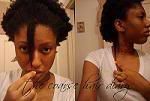Temporary hair straightening using a flat iron is achieved by applying heated tongs to the length of the hair. This heat breaks and then reforms the hydrogen bonds in the inner core of the hair fiber. Dr. Mirmirani noted that while the goal of straightening is to alter the inner substance of the hair, the unwanted consequence may be damage to the outer protective cuticle, causing weathering, damage and eventual hair breakage.
Hair weathering or damage is usually characterized by dry ends or flyaway hair. However, if breakage occurs, it can happen anywhere along the length of the hair and cause a shaggy or skimpy appearance to the hair. When this occurs, flat iron users may use the device even more frequently to try to tame the broken or uneven appearance of their hair — which can lead to more damage.
Today, many ceramic flat irons on the market have variable heat settings with maximum temperatures of up to 410 degrees Fahrenheit (210 degrees Celsius). Prior studies have shown that temperatures of 347 to 419 degrees Fahrenheit (175 to 215 degrees Celsius) for as little as five minutes are enough to damage most hair. However, Dr. Mirmirani warns this threshold may be even lower if the heat is applied to damp hair or hair that has been chemically treated with color or permanents, as she is seeing patients who fit this scenario more frequently. If women are not willing to give up their flat irons in the quest for straight hair, Dr. Mirmirani advised them to take precautions.
"Proper use of flat irons is extremely important, especially given how quickly hair can be damaged with high heat settings," said Dr. Mirmirani. "Flat irons should only be applied to dry hair, and specialized styling products that act as heat protectors may be applied to the hair prior to pressing to help prevent burning and allow for smoother hair that remains straight longer. If there is a temperature setting on the device, it should be set no higher than 347 degrees Fahrenheit, or 175 degrees Celsius, or on the low/medium setting." Read More >>
Hair weathering or damage is usually characterized by dry ends or flyaway hair. However, if breakage occurs, it can happen anywhere along the length of the hair and cause a shaggy or skimpy appearance to the hair. When this occurs, flat iron users may use the device even more frequently to try to tame the broken or uneven appearance of their hair — which can lead to more damage.
Today, many ceramic flat irons on the market have variable heat settings with maximum temperatures of up to 410 degrees Fahrenheit (210 degrees Celsius). Prior studies have shown that temperatures of 347 to 419 degrees Fahrenheit (175 to 215 degrees Celsius) for as little as five minutes are enough to damage most hair. However, Dr. Mirmirani warns this threshold may be even lower if the heat is applied to damp hair or hair that has been chemically treated with color or permanents, as she is seeing patients who fit this scenario more frequently. If women are not willing to give up their flat irons in the quest for straight hair, Dr. Mirmirani advised them to take precautions.
"Proper use of flat irons is extremely important, especially given how quickly hair can be damaged with high heat settings," said Dr. Mirmirani. "Flat irons should only be applied to dry hair, and specialized styling products that act as heat protectors may be applied to the hair prior to pressing to help prevent burning and allow for smoother hair that remains straight longer. If there is a temperature setting on the device, it should be set no higher than 347 degrees Fahrenheit, or 175 degrees Celsius, or on the low/medium setting." Read More >>









 Product Name: Oyin Handmade Greg Juice
Product Name: Oyin Handmade Greg Juice













One comments
January 1, 2009 at 4:02 PM
Excellent article BC! Thanks so much. This really helps me in my resolve to continue to minimize heat usage, protective style, and decrease manipulation of my hair.
Post a Comment